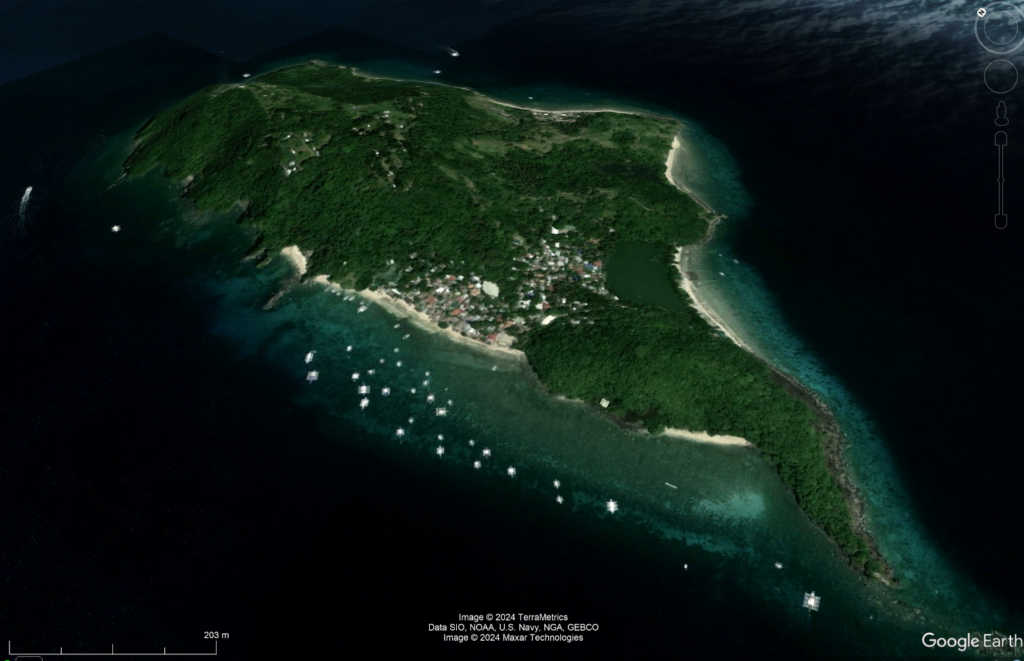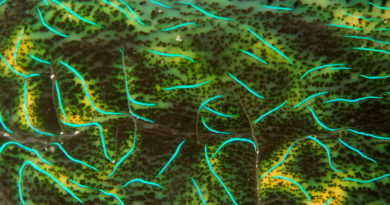The Ultimate Apo Island Guide – Incredible Diving in the Philippines
Apo Island is an absolute gem of a diving destination, located in the Visayas region of the Philippines, in the Negros Oriental province. Apo is partially protected, and fishing is limited to the few locals of Apo, so the reefs and fish fauna are in better shape than many other places in the Philippines. Apo is an absolute gem of a dive site, off the coast of Negros, in the middle of the ocean, with so much to discover underwater. There are lots of marine turtles, both Hawksbill as well as Green turtles, and there are geothermal gases coming from the seafloor in some parts (more about that below). Apo Island is a scuba diver’s paradise!
I have had the great pleasure to dive in Apo for a few years now, for fun, to teach scuba students, and also to document my friends’ and colleagues’ scientific work. I have ended up with a lot of material about Apo, both video, photos, and insights about how to get to Apo & have great dives there. The videos & images here will lead you to my YouTube and Flickr, where there is more Apo content to see. Ok, let’s get going:
How to Get There
The closest city to Apo Island is Dumaguete, the capital of the province of Negros Oriental. Dumaguete has a domestic airport. You can also get to Duma by ferry from Cebu, Bohol, Siquijor and Dapitan/Mindanao. Dumaguete is a lovely little university town, I am writing this in a cafe in Duma, overlooking the ocean.
Apo Island is part of Dauin, the scuba diving town south of Dumaguete, a ~30 minute car or bus ride away. It’s easy to get to Dauin by public transport, or your hotel can arrange a van for you. The dive map below shows you the dive sites of Dauin, both coastally on Negros, as well as some in Apo.
There are plenty of quality dive shops in Dauin, I recommend Sea Explorers, I dive with them and offer marine biology seminars via them. From Dauin, there are two options of diving Apo Island:
- You can dive via one of the dive shops in Dauin. These are typically 2 or 3 dive day trips, where you’ll leave by boat around 8am, and are back around 3pm. You’ll bring lunch; You can set foot on the actual island, but often you won’t, just do all of your dives from the boat, eat on the boat, and then head back. The boat ride to Apo is about 45 minutes.
- Alternatively, you can make your way to Apo on your own. You’ll have to get yourself to Malatapay pier, in Zamboanguita, one municipality south of Dauin. There you can catch a public ferry to Apo. On Apo, there are 2 resorts, Coco Grove and Liberty’s, and a number of nice homestays. I only did this once, and it’s a nice option too if you have the time; note that Apo doesn’t have electricity 24 hours a day, at least as of a few years ago. You can dive with one of the dive shops in Apo, if you chose to stay on the small island. Liberty’s has a dive shop, and Mario’s dive shop is also well known.
It’s Far From Apo Reef
It’s worth pointing out that Apo Island is different from Apo Reef, which is in Mindoro, a day’s worth of travel through several Philippine provinces. “Apo” means grandchild, and there are several locations called “Apo” in the Philippines, like Mount Apo, the country’s tallest mountain. Apo Reef is also great to dive, so I hear, I haven’t been there as of mid-2024, but it’s not the reef off Apo Island.
The Diving
You have a choice of wall dives in front of “Chapel”, dives along reef slopes, and awesome kick-ass drift dives in Coconut & Cogon, on the north side of the island. Lagahan has the curious geothermal bubbles (see below for more). All dives but the drift dives can be enjoyed by beginners, and the shallow reef top is very biologically rich. Apo has steep walls though, and it’s a good spot for tech diving as well. Recently, sharks have been sighted in 40+ meters in Apo.
Between dives, often local ladies come on board and sell T-shirts with maps of Apo. This is a nice opportunity to interact and to support the locals some more.
In the Google Earth photo below you can see Apo island from the south-west. You can see the main village of the island; in front of it is the most popular dive site, “chapel”. Quite a few boats are moored there. Some of these are local transport boats, not dive boats. Unless you dive Apo around Easter or Christmas, you won’t be alone, but it’s typically not crowded. On the north and north-east are the great drift dives, coconut and Cogon. These can have very fast currents, and are best left to advanced divers. These are top dives though, with lots of big fish.

Prof Alcala’s Role & Conservation
A man who has to be mentioned when talking about Apo Island is Prof Angel Alcala, a marine biologist who established the marine protected area in Apo Island. A stretch on the island’s east is off completely limits for fishing and diving (except with a scientific permit), and in the 80s such a protected area was ground-breaking.
So, this is a piece of coastline you won’t be able to get to as a diving tourist (there is footage how it looks there underwater at the end of this post). The rest of Apo island is open to fishing, but only to the residents of Apo. This is not an empty island, but a populated piece of Southeast Asia. As you can see on the aerial view above, Apo has a village on the west side, facing Negros. Some villagers profit well from tourism; others don’t, or not much, and still make a living fishing.
The fact that fishing is limited to the residents of Apo only, excluding the much larger population of Negros, makes a difference though. You will typically see more fish than in many main island/coastal regions of the Philippines, including bigger ones like sweetlips and groupers. The north side of the island has big schools of jacks (see the video below). Recently (as of 2024) technical divers have been seeing sharks in the 40+ meter range, including hammerhead sharks. What you won’t see is a large-fish fauna a la Galapagos, with big sharks lurking round every corner, and manta rays.
As of early 2024 there was a region on the northern side of the island which is reserved for fishing (no diving), which makes sense to avoid dive boats crossing paths with fishing boats. Also on the north side of the island you will frequently see small boats with guys fishing hook-and-line. These are far off the reef (no need to fear getting hooked!) and they are fishing for priced large fish like trevaleys.
In summary, Apo is home to a long-running marine protected area (no fishing or diving there). The rest of the island is open to tourist diving and fishing for the locals. It’s a great dive location, but you are not alone with the fish there.
Reefs, Turtles and Sea Snakes
The coral reefs in Apo Island are a sight to behold, with a very high coral cover. But what the island is best known for are the turtles. Check out the video below to see what to expect. If you act calmly, they will stick around; the animals are somewhat habituated to divers. There are sea snakes too. They are venomous, but not aggressive.
Bubbles!
And, yes, there is a dive site, Lagahan, where geothermal gases emerge from the sand. A very unusual sight! My friend Jeffrey explains in the video below in more detail what is going on there:
More Coral Reef Footage
This is some footage from the sanctuary on Apo’s east side; I managed to dive there with a good friend from Silliman University, who has a scientific permit to enter. Normally, this site is off-limits to divers. Via my video you have a chance to experience that site too:
Enjoy Apo,
Best Fishes,
Klaus



